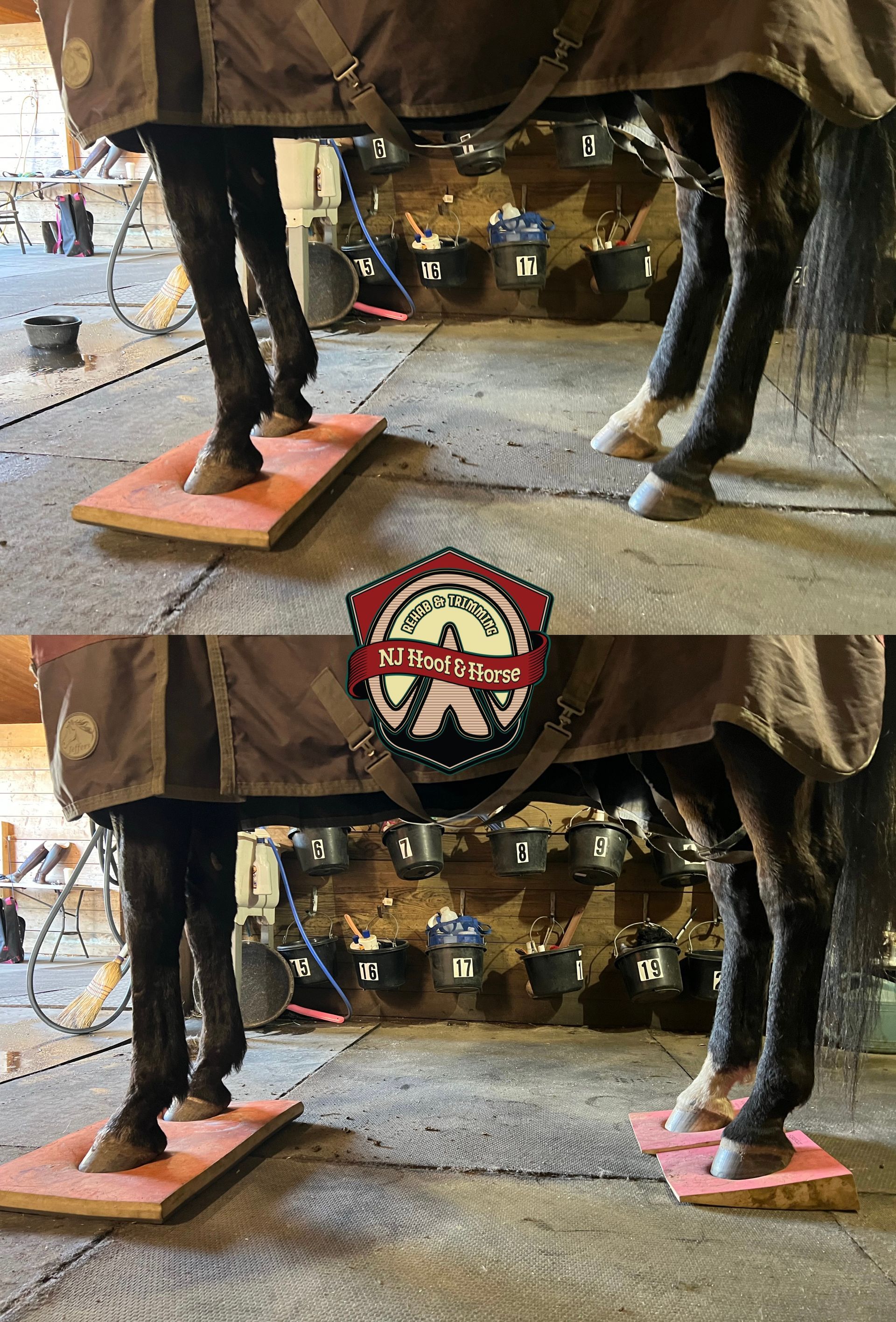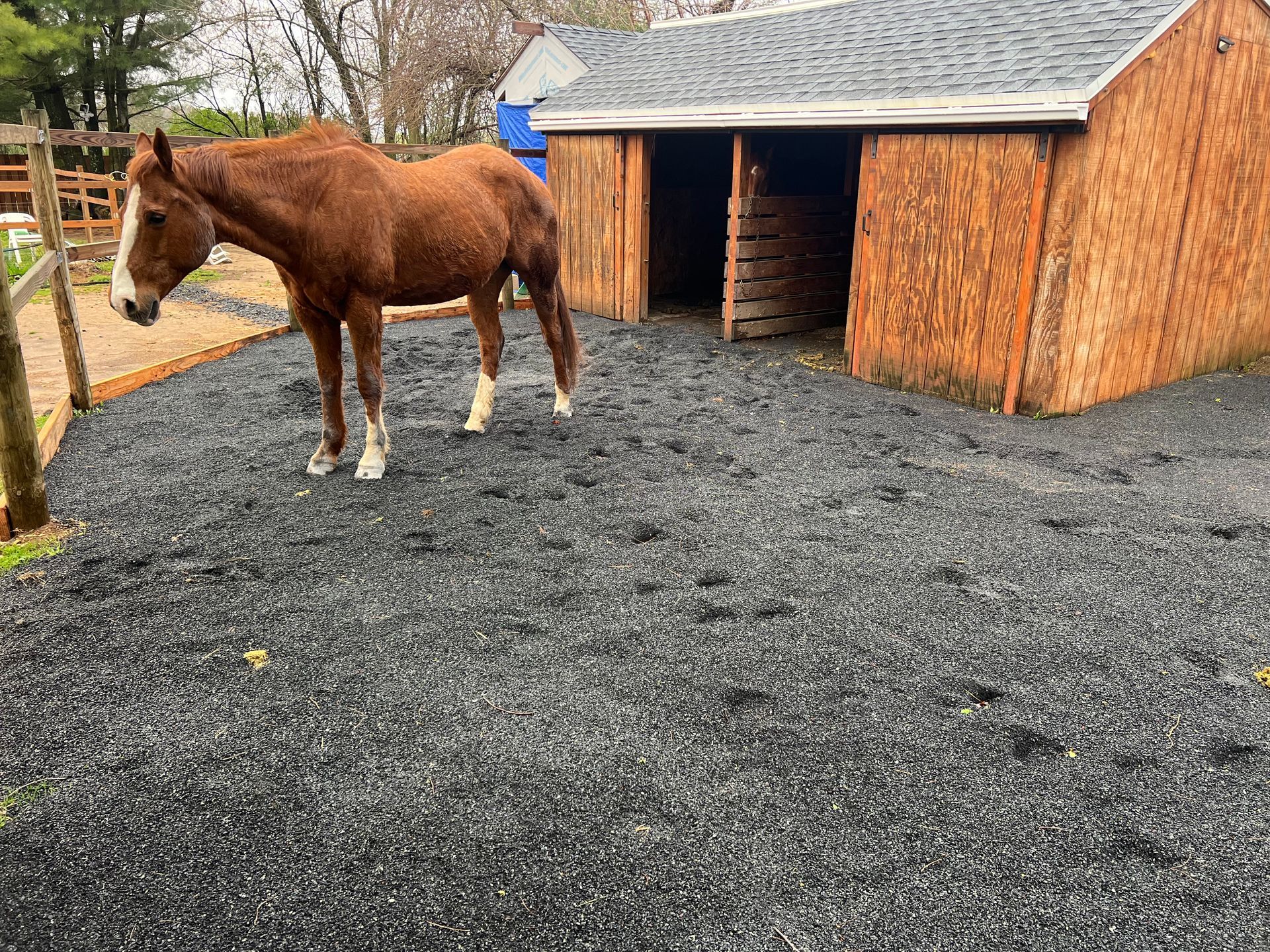My horse cant go barefoot
One Minute Discussions #5
Discussing Natural Hoof & Horse Care Who has a barefoot horse and who has a shod one? Comment below, I wanna know😁
“My horse can’t go barefoot”
I hear that a lot… from different people, everyone from barn managers to dressage riders to backyard horse owners. But what is making the people believe this myth?🤔 Why are so many people convinced that their horse can’t go barefoot?🤷🏻♂️
First, I want to mention that I’m not criticizing any farriers/trimmers or their work since all of them are helping horses in their own way. I think its good to know the information that’s available about shoeing and barefoot. Let’s discuss the role shoes play. They protect the hoof from the harsh environment. Instead of wearing the hoof structures, the horse wears off the metal shoe. It sounds like a great idea! To a certain point, it is! The shoe is getting all the wear and tear and the hoof is getting protected from the terrain. What could be better, right? It’s important to consider not only the benefits but also the detrimental effect the shoe can have on a hoof.
Dr. Robert Bowker, a veterinarian and equine specialist, studied countless horses and hoof cadavers and came to a conclusion that in order for the hoof to properly function barefoot, the soft tissue structures in the back half of the foot have to be developed. This can be done ONLY if the hoof is being stimulated while moving. That means that it can’t be accomplished when the horse is locked up in a stall. (Check out the articles at the end of this post)
What effect does the shoe have on a hoof? It’s no secret that the frog absorbs the shock impact when the horse is moving… but when the frog is lifted off the ground by the shoe it can’t achieve that shock absorbing goal. Another thing to watch out for in shod horses is pressure and peripheral (edge) loading. In a barefoot hoof there is pressure when the foot is loaded on the ground and release when the hoof is in midair. With shoes there is a risk of constant pressure which then creates a problem with circulation. Dr. Bowker mentions that lack of circulation, especially from toe clips, can cause bone loss in the hoof.
Now you may say, “Well I pulled the shoes and let him/her out barefoot in his paddock and he/she was lame the next day, so the hooves need shoes”. Unfortunately, in order for the horse to be sound barefoot we can’t just leave them running in the paddock. In order for us to successfully get the horse sound barefoot we need to view the hoof as something that can self-maintain if proper steps are taken to improve its health.
When you pull shoes, especially if the horse has hoof pathology and has been in them for a long time, usually, you’re putting the weight of the horse on very weak and underdeveloped structures. We can’t expect the horse to trot like a dressage/ show horse if he’s walking on soft, marshmallow feet right? That’s where hoof protection comes in😃. I’m talking about hoof boots. In many cases it’s great alternative to steel shoes. Hoof boots are flexible and durable which means it provides both stimulation and protection. I’ve heard stories about people giving up on hoof boots just because they got a pair, put them on the hoof and they were rubbing or the boot simply didn’t fit. Thats where you need pro help, or at least advice from a person who’s knowledgable in boot fitting✅!
Another big thing when pulling shoes is diet! In fact I should’ve mentioned it first🫢! It’s very important to get rid of products that may be causing internal inflammation in the hoof even before you pull shoes. If there’s constant inflammation, if the structures are falling apart from the inside-out then its very hard to get the horse sound barefoot.
Looking from a financial perspective, you’re saving yourself 💰money 💰when you pull shoes. A trim & basic front shoes cost anywhere from 120$ to 150$. Trim & shoes on all 4 may cost you from 150$ to 200$… and that’s every 4-6 weeks. Now if you were to buy boots you would spend roughly 100$ to 160$ and they would last you a long time. Of course it depends on how often you ride in them them but if you put them on the hoof on trail rides and take them off afterwards then I guarantee you they will last at least a year, sometimes even more. Trims are usually 40$ to 60$ every 4-6 weeks, depending on the health of the hoof. Add this all up, it’s worth sitting down and counting your expenses.
Of course sometimes we find pathology in the hoof that requires constant protection and it is very hard for the horse to be barefoot. There’s great alternatives to steel shoes these days, for example composite glue-on shoes, or many owners are willing to try booted turnout for their horse.
I constantly remember what Pete Ramey, a farrier/hoof rehab specialist once said: ”If shoeing horses fixed all the problems I would have stopped at learning to shoe. If a barefoot trim fixed all the problems I would have stopped at learning to trim.”
That’s a very powerful statement, I think a lot of people should read it again and think about it more. This shows us how important continuing education is when we’re rehabilitating a horse to barefoot.
Being barefoot is normal for a horse and it’s not that difficult or scary as it might seem🙂. As was mentioned, before pulling shoes it’s important to consider the horses diet, terrain, movement and the physical activities in order for them to stay sound. Along with the help of a knowledgeable farrier it is possible for a huge percentage of horses to be barefoot!
If you have any questions feel free to chat with me! Also if you want to share your experience with switching from shod to barefoot you’re more than happy to comment!
As always, thanks for reading and you’re more than welcome to share this post😊
Denys A.
https://www.thelaminitissite.org/feet-faq--articles/robert-bowker-hoof-anatomy-videos
https://www.hoofrehab.com/Gelpad.html
https://www.hoofrehab.com/ArticlesPDF/Pete%20Ramey%20Q&A.pdf

